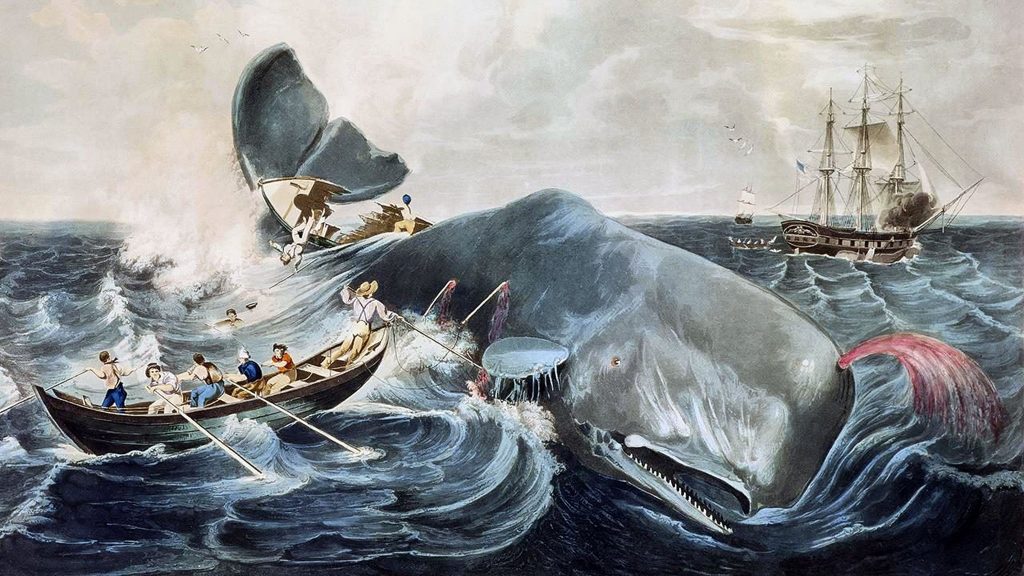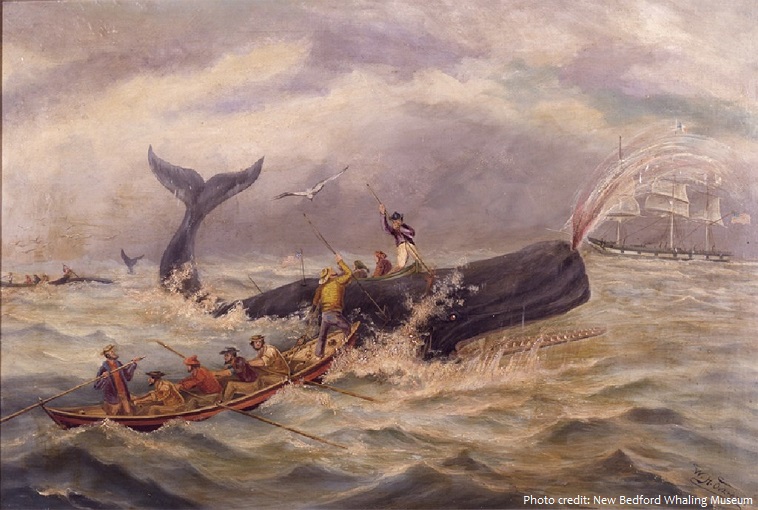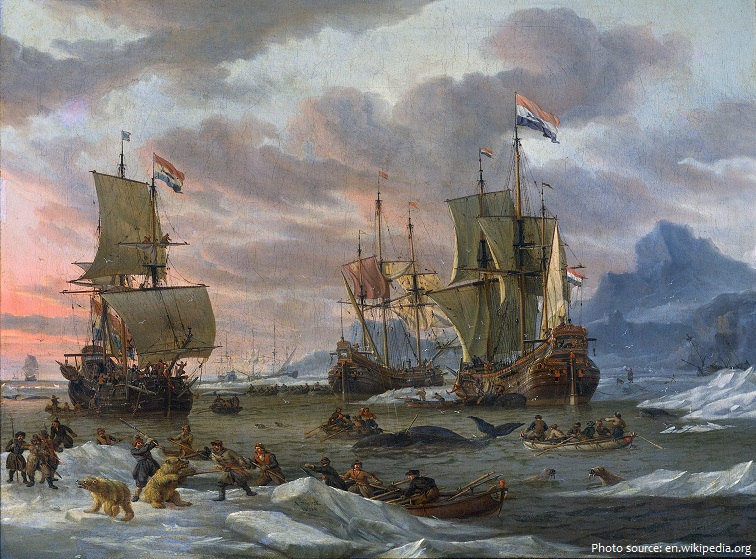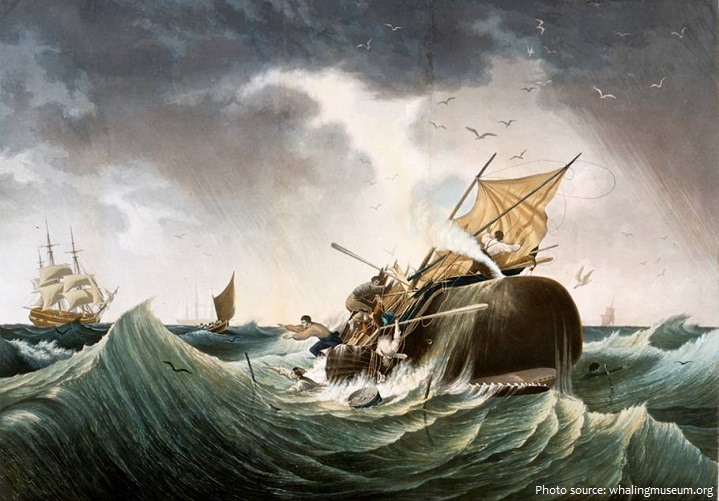
Whaling is the process of hunting of whales for their usable products such as meat and blubber, which can be turned into a type of oil that became increasingly important in the Industrial Revolution.
People have been whaling for thousands of years.
Early depictions of whaling at the Neolithic Bangudae site in Korea, unearthed by researchers from Kyungpook National University, may date back to 6000 BC.
Norwegians were among the first to hunt whales, as early as 4,000 years ago. The Japanese may have been doing so even earlier.

The oldest known method of catching cetaceans is dolphin drive hunting, in which a number of small boats are positioned between the animal and the open sea and the animals are herded towards shore in an attempt to beach them.
Another early method used a drogue (a semi-floating object) such as a wooden drum or an inflated sealskin tied to an arrow or a harpoon. Once the missile had been shot into a whale’s body, the buoyancy and drag from the drogue would eventually cause the whale to tire, allowing it to be approached and killed.
Nearly every part of the whale was used. Meat, skin, blubber, and organs were eaten as an important source of protein, fats, vitamins, and minerals. Baleen was woven into baskets and used as fishing line. In warmer climates, baleen was also used as a roofing material. Bones were used primarily for toolmaking and carving ceremonial items such as masks.

Whale bones recovered near the Strait of Gibraltar raise the possibility that whales were hunted in the Mediterranean Sea by ancient Rome.
Whaling was practiced as an organized industry as early as 875 AD.
In Europe, the Nordic people hunted small whales, and Icelandic laws dealt with whaling in the 13th century.
The forerunners of commercial whaling were the Basques, who caught northern right whales as the animals gathered to breed in the Bay of Biscay. When seaworthy oceangoing ships were built, the Basques set off in search of other bays where whales congregated. They found them across the Atlantic off the coast of southern Labrador.

Drafting Basque whalers for its Arctic explorations, the English Muscovy Company initiated the exploitation of whaling bays in Spitsbergen, Norway, in 1610. The Dutch followed immediately and broke the English monopoly, which had already stifled native competition. Smeerenburg (“Blubbertown”), a Dutch whaling village, was built on Spitsbergen after 1619.
Smeerenburg shut down in the 1660s, and Dutch and German whalers navigated the open sea until their activity collapsed in the 1780s. At that point Britain, in order to support its industrial revolution, took over as the principal European whaling nation.

During the 18th and early 19th centuries, the chief vessels used to capture whales were merchant ships. They were reinforced with beams against sea ice and were heavily armed against attack. American whaling ships were initially smaller than British vessels and were painted to look like warships. During the 19th century larger ships built specifically for whaling became more common. In the 1850s clipper ships gained favor.
Beginning in the late colonial period, the United States grew to become the preeminent whaling nation in the world by the 1830s. American whaling’s origins were in New York and New England, including Cape Cod, Massachusetts and nearby cities. Whale oil was in demand chiefly for lamps. By the 18th century whaling in Nantucket had become a highly lucrative deep-sea industry, with voyages extending for years at a time and traveling as far as South Pacific waters.

Whale oil was essential for illuminating homes and businesses in the 19th century, and lubricated the machines of the Industrial Revolution. Baleen (the long keratin strips that hang from the top of whales’ mouths) was used by manufacturers in the United States and Europe to make varied consumer goods.
In the late 19th century the whaling industry was transformed by the development of steam powered ships, enabling the hunting of faster blue and fin whales, and of the explosive harpoon, enabling further reach and increased accuracy. The new technology, coupled with the depletion of whales in the rest of the world, led to the spread of hunting to the Antarctic, where huge concentrations of feeding whales made large-scale whaling highly profitable.

The First World War provided a large market for explosives using glycerine from baleen whale oil provided by British and Norwegian whaling in the Antarctic. Meanwhile Japanese whaling had developed separately as a coastal industry, mainly for humpback, right and grey whales.
Commercial whaling dramatically reduced in importance during the 19th century due to the development of alternatives to whale oil for lighting, and the collapse in whale populations.
The depletion of some whale species to near extinction led to the banning of whaling in many countries by 1969, and to a worldwide cessation of whaling as an industry in the late 1980s.
Contemporary whaling is subject to intense debate. Canada, Iceland, Japan, Norway, Russia, South Korea, the United States and the Danish dependencies of the Faroe Islands and Greenland continue to hunt in the 21st century.
Over the past few decades, whale watching has become a significant industry in many parts of the world – in some countries, it has replaced whaling, but in a few others, the two business models exist in an uneasy tension.
